Precision is the authorized march of Royal Military College of Canada. The RMC band performs Precision during parades and march pasts, as well as on Ex-Cadet Weekends.
Precision was composed in 1932 by Denise Chabot, wife of Major C. A. Chabot, [1] a Royal Canadian Artillery officer on staff as professor of French at the College at the time. She earned the degree of Associate of the Royal Conservatory of Music and was the president of the Kingston Music Club.[ citation needed ]
Precision was inspired by "Madelon", one of the popular marching songs sung and whistled by the cadets marching on their way to the Riding School, and the favourite song of the Class of 1932. Mme Chabot improvised a variation on the song, to represent the cadence of the cadets on the march. The composition starts, “We are the gentlemen cadets of RMC We have sworn to love and serve Her Majesty…” [1]
The as-yet untitled composition was presented to RMC in the spring of 1932, it was orchestrated for military band by Captain F. W. Coleman of the Royal Canadian Horse Artillery.
In the fall of 1933 the Associated Screen News Ltd. made a full-length feature “Precision” (1933) film, “A sample look at discipline at the Royal Military College. The emphasis is on precision gymnastics displays, ceremonial battalion marches in full uniform, and the changing of the sentry demonstrated by gentlemen cadets of the College. Seen is the exterior of the RMC buildings (the Stone Frigate)." [2] Mme Chabot found the name fitting and in 1933 called her composition by the same title. [3]
The College will, when the occasion calls for it, sing along to Precision. [4] Professor Tom F. Gelley, also of the College Staff, composed words in 1932 to fit the spirit expressed in the College motto, "Truth, Duty, Valour" and measure of the music. The title "Heads Up" was a hockey expression. The work was presented to the College through the then B.S.M., J. G. Carr, and was accepted by the then Commandant, Major-General W. H. P. Elkins. [5] The lyrics by Professor Thomas Fraser Gelley, of the College Staff, were published in the R.M.C. Review in 1941. [6]
The lyrics have been altered over time. In the late 1950s the 3rd verse, “And strive to keep our Empire’s unity” became “And strive to keep our country’s unity”; and in the 4th verse, “For Canada and for our Empire great” became: “For Canada our land both broad and great”.
Since 1980, the 3rd verse, “We are the gentlemen cadets of RMC” was changed to “We are the officer cadets of RMC”. [7]
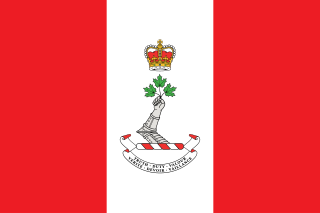
The Royal Military College of Canada, abbreviated in English as RMC and in French as CMR, is a military academy and, since 1959, a degree-granting university of the Canadian Armed Forces. It was established in 1874 and conducted its first classes on June 1, 1876. The Government of Ontario empowered RMC to confer degrees in the Social Sciences and Humanities, Science, and Engineering through The Royal Military College of Canada Degrees Act, 1959. Programs are offered at the undergraduate and graduate levels, both on campus as well as through the college's distance learning programme via the Division of Continuing Studies.

The Royal Military College Saint-Jean, commonly referred to as RMC Saint-Jean and CMR, is a Canadian military college and university. It is located on the historical site of Fort Saint-Jean, in Saint-Jean-sur-Richelieu, Quebec, 40 km south of Montreal. RMC Saint-Jean is an arm of the Canadian Military College (CMC) system that provides two college-level programs in Social Science and Science, which are closely integrated with the undergraduate programs offered by the Royal Military College of Canada. RMC Saint-Jean was granted independent university status in 2021, and it currently offers a bachelor's degree in International Studies.

Arthur Hamilton Lee, 1st Viscount Lee of Fareham,, was an English soldier, diplomat, politician, philanthropist and patron of the arts. After military postings and an assignment to the British Embassy in Washington, he retired from the military in 1900. He entered politics, was first elected in 1900, and later served as Minister of Agriculture and Fisheries and First Lord of the Admiralty following the First World War. He donated his country house, Chequers, to the nation as a retreat for the Prime Minister, and co-founded the Courtauld Institute of Art.

The RMC Paladins are the athletic teams that represent Royal Military College of Canada in Kingston, Ontario, Canada. Its facilities include the Kingston Military Community Sport Centre (KMCSC) with seating for 3737, the Navy Bay fields with seating for 800 and Constantine Arena with seating for 1500 and the Birchall Pavilion.
Colin William George Gibson, was a Canadian politician, land surveyor and lawyer.
Lieutenant General John Carl Murchie was a Canadian soldier and Chief of the General Staff, the head of the Canadian Army from December 27, 1943, until August 21, 1945.
Major-General Thomas Victor Anderson DSO, CD was a Canadian soldier and Chief of the General Staff, the head of the Canadian Army from 21 November 1938 until 6 July 1940.

Fort Frederick is a historic military building located on Point Frederick on the grounds of the Royal Military College of Canada (RMC) in Kingston, Ontario, Canada. Its construction dates to 1846 and the Oregon boundary dispute. The fort consists of earthworks surrounding a Martello tower. Fort Frederick is included in two separate National Historic Sites of Canada: Kingston Fortifications National Historic Site and the Point Frederick Buildings National Historic Site.

St. George's Cathedral in Kingston, Ontario, Canada, is the cathedral church of the Anglican Diocese of Ontario.
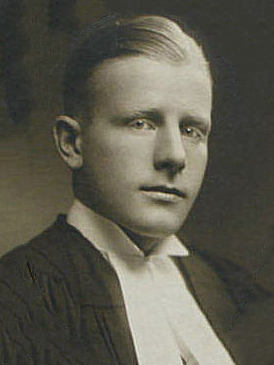
Brigadier General Douglas Gordon Cunningham, was a Canadian lawyer and soldier.
Captain John Moreau Grant CBE (1895–1986) was the first Commanding Officer of HMCS Royal Roads in Esquimalt, British Columbia. The Grant Building at Royal Roads University was named in his honour.
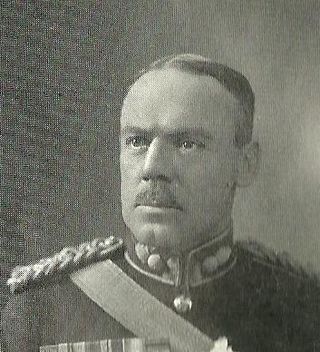
Major-General Charles Francis Constantine was a Canadian General and commandant of the Royal Military College of Canada from 1925 to 1930.

The Royal Military College of Canada Museum, established in 1962, is located in a Martello tower known as Fort Frederick on the campus of the Royal Military College of Canada in Kingston, Ontario, and is operated by the college. Until 2016 the museum had regular hours from the last weekend in June until Labour Day. Although admission was free, donations were accepted. Guided tours were offered in English and French. Genealogical research and archival records services were offered relating to college history or with inquires relating to ex-cadets when permitted by privacy regulations.
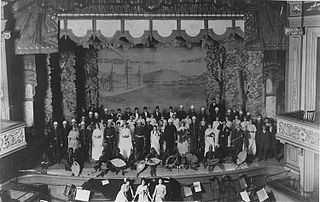
Leo, the Royal Cadet is a light opera with music by Oscar Ferdinand Telgmann. The libretto was by George Frederick Cameron. It was composed in Kingston, Ontario, Canada in 1889. The work centres on Nellie's love for Leo, a cadet at the Royal Military College of Canada who becomes a hero serving during the Anglo-Zulu War in 1879 between the British Empire and the Zulu Empire. The operetta focussed on typical character types, events and concerns of Telgmann and Cameron's time and place.
Currie Hall is a hall within the Currie Building, which is an annex to the Mackenzie Building at the Royal Military College of Canada in Kingston, Ontario. It was built in 1922, and is a Recognized Federal Heritage Building.

The Royal Military College of Canada Bands is the official group of bands of the Royal Military College of Canada. The group is composed of four sections: the brass and reed, the pipes and drums, highland dancers, and choristers. Total band membership consists of 105 Officer Cadets from the college. Officer Cadets in the band practice three days a week in the morning on top of attending their individual full-time university programs.
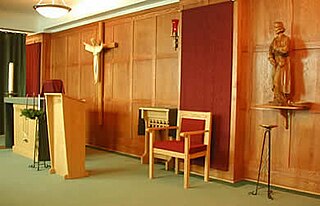
In 2013, the Royal Military College of Canada is celebrating the 50th anniversary of the two small devotional chapels in Yeo Hall, which were installed in 1963. With a view to encourage and enhance their spiritual well-being, the Protestant and Royal Catholic Chaplains, cadets and staff use the Chapels. Gifts to the chapels have been made by successive generations of cadets and ex-cadets.

Kate Armstrong is a Canadian author. She won the Ontario Historical Society Alison Prentice Award for her debut memoir, The Stone Frigate: The Royal Military College's First Female Cadet Speaks Out and was a finalist for the 2020 Kobo Emerging Writer Nonfiction Prize.
{{cite web}}: CS1 maint: archived copy as title (link)